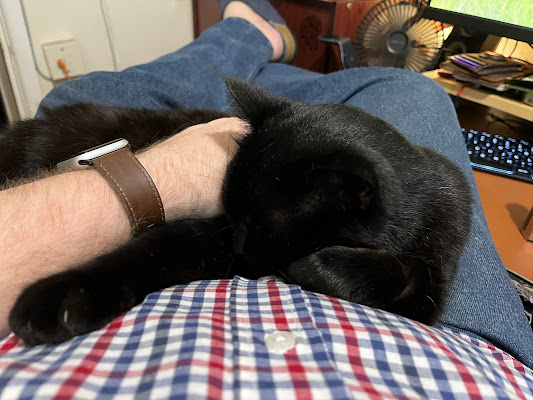Novint Falcon Gaming Controller Takes Aim on Your Mouse
Novint Falcon With Pistol Grip Attachment
Behold, the Novint Falcon. This menacing orb has taken upon the lofty task of replacing the mouse as the PC gamer's preferred implement of destruction, letting you feel, lift, push and grope every bit of the action. It sits on your desk and provides force feedback — but not the vibrating-controller effect that console couch surfers are familiar with. Instead, powerful motors within the device provide a full range of responses, whether you're bouncing a ball on a string or reloading a shotgun. Because really, what good are advances in technology if we can't focus them on the obliteration of our gaming peers?
The first version of the Falcon we saw was a bit of a renaissance — well for games like Tiger Woods PGA Tour 07 anyway. When gripping the original control interface (a small, multibuttoned round knob), controlling Tiger's swing becomes a matter of muscle coordination — for better or for worse. In our vain attempts at perfecting our line drives, we hit dozens of shots, each wildly different from the next, by simply adjusting the angle and force with which we moved the knob. Suddenly, following through on a swing becomes incredibly important, as the slightest adjustments to the pressure you apply can wildly alter the ball's flight.
But chances are, you're not checking out the Falcon for the fully immersive golfing experience: You want to light shit up with a high-caliber firearm. Well, Novint has got you covered. Using the Falcon's new Pistol Grip, titles like Half-Life 2 suddenly become an entirely different game.
Forget fragging as you know it. With the pistol grip coming dangerously close to flying out of your hands after a few quick bursts with a submachine gun, you may wonder how you got along without this level of feedback in the first place. Every weapon takes on new life, from the meager jostling of the standard pistol, to the forceful thunder of a rocket launcher's blast.
Of course, there's more to force feedback than weapon recoil. Lift an object, and you'll feel the appropriate amount of weight on the grip — barrels being heavier than a wooden board. In the airboat section of the game, splashing leaps on water contrast noticeably with cruising over slick mud. Or, get in the car and feel the difference between navigating on paved roads and crunching over sand. Even jumping is a joy, as minute vibrations ripple through the underside of the controller, depending on how hard you fall. And the same goes for grenades falling around you — you'll finally know exactly where to run screaming for cover.
You can adjust force feedback as much as you'd like. Eliminate it completely if it's not your thing, or tweak the settings down to the individual weapon: an option you'll find useful the first time you let off a shot with the .357 magnum. For multiplayer matches you might feel inclined to turn off weapon recoil altogether, and focus on environmental cues to determine where damage is coming from, giving you a bit of a tactical edge should a hidden sniper fail to make a lethal shot.
Half-Life 2 is just one of many games currently supporting the peripheral, and many more (including upcoming Left for Dead) are in the works. Supported games will have to be patched, to add on the haptic functionality. When we met with Novint CEO Tom Anderson, he mentioned that there would even be haptics-only servers on some games, so gamers could choose to only play against others who were dealing with this entirely new control scheme.
A glaring issue with the device is how well game developers choose to implement it. With Half-Life 2, there were a wide range of options for tailoring the experience to your liking. Battlefield 2 also featured many nice touches, with reload animations that were replicated by the device. With Quake 4 however, the whole notion of haptic feedback felt tacked on: You can adjust sliders to determine some of the sensitivity, and there's definitely a difference in recoil with weapons, but overall, it doesn't add much to the game.
The level of detail that the Falcon adds may also be detrimental to seasoned gaming veterans. As expected with using an entirely new method of control, there's a steep learning curve involved. You'll have to dedicate quite a bit of time to tweaking the sensitivity settings, from looking around to interacting with the environment. Running around smacking things with a crowbar feels great, but until you're used to the controls even simple battles become chaotic, with recoil and external forces sending your arm flying wildly, and consequently screwing up your aim.
Whether or not the Falcon replaces your prized gaming mouse will be a matter of how well you adjust to really feeling what your character is up to. For sports games, the superiority of the experience is a no-brainer, as you just can't get this level of control from a standard mouse and keyboard setup. With shooters, the single player experience is unparalleled (if it's implemented right), but without the proper “training,” you might just end up frustrated, particularly when enemy mouse-jockeys wonder why you're twitching so much.